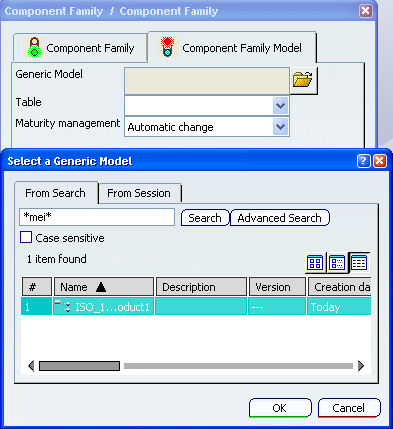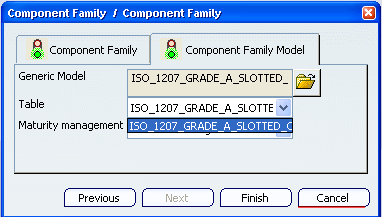From the PLM Access menu, select New.
In the New PLM Type window, expand the
All Types node and select Component Family. Click
Next. The Component Family window opens.
Enter the name of the family in the Name
field.
Click the Component Family Model tab.
Click the File icon in the Generic Model
field to select the model you want to use. The Select a Generic
Model window opens.
Click Search and select the model in the
list. Click OK.

Select the table in the Table scrolling list.

Select the maturity in the Maturity management
scrolling list.
The Maturity management field
allows you to specify the behavior of the resolution mechanism
for the family item regarding maturity changes:
- If set to Automatic Change, the maturity
of the resolved items is modified during resolution.
- If set to Manual Change, the maturity
of the resolved items is the default one, but it can
be modified either using VPM Navigator command, or using
the
Change maturity of resolved models command
 .
To find out more about maturity, see
Changing the Maturity of the Generic Model and
Changing the Maturity of Resolved Models.
.
To find out more about maturity, see
Changing the Maturity of the Generic Model and
Changing the Maturity of Resolved Models.
Note that the resolution is the generation of PLM Components
corresponding to the family item.
Click Finish when done. The Component
Family editor opens.
Once in the Component Family editor, the
Maturity Change mode offers the possibility to switch between
either an Automatic or a Manual mode at any time and not only when creating
a Component Family. To find out more about this method, see
Using the Maturity Change Mode.